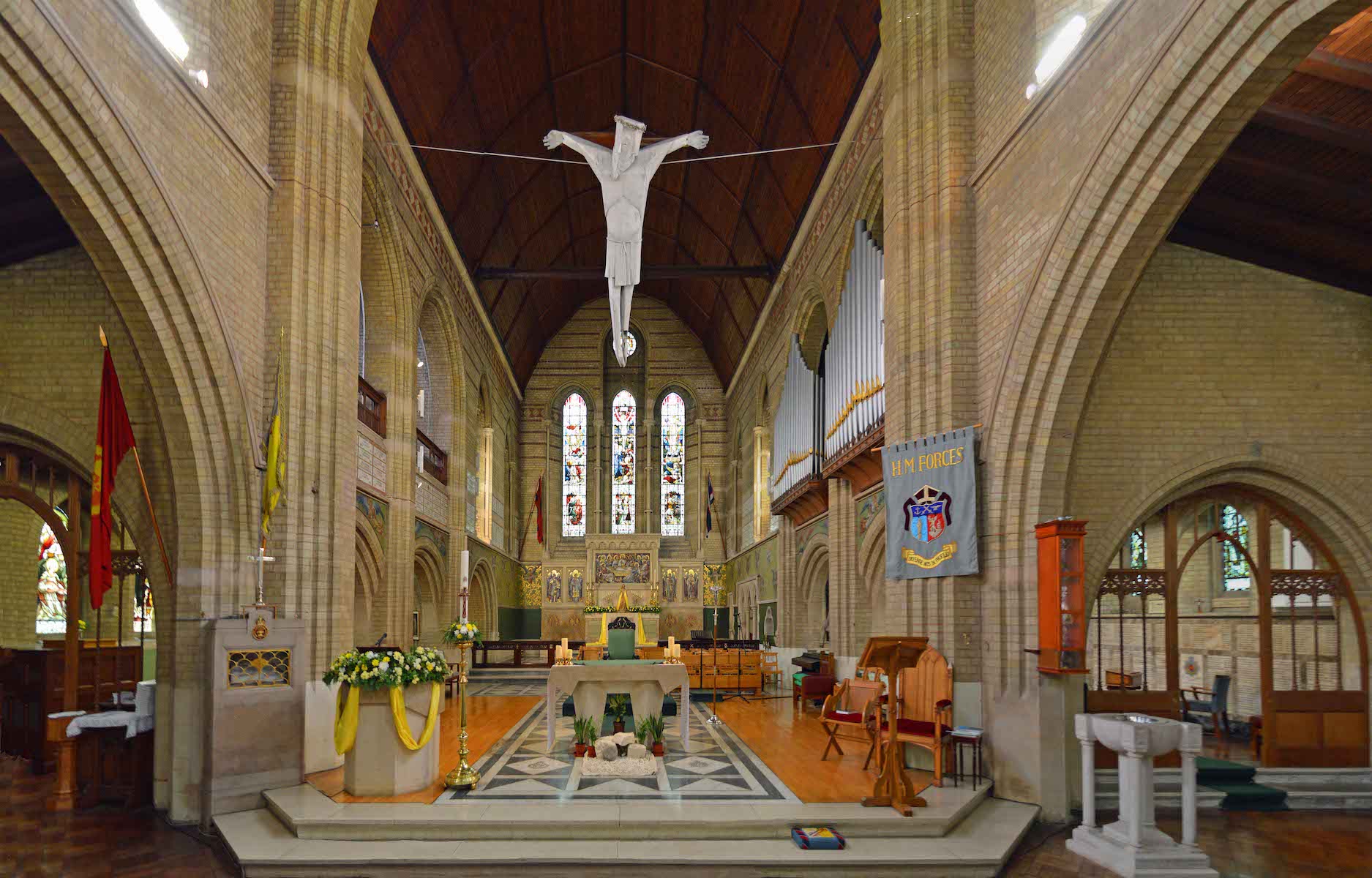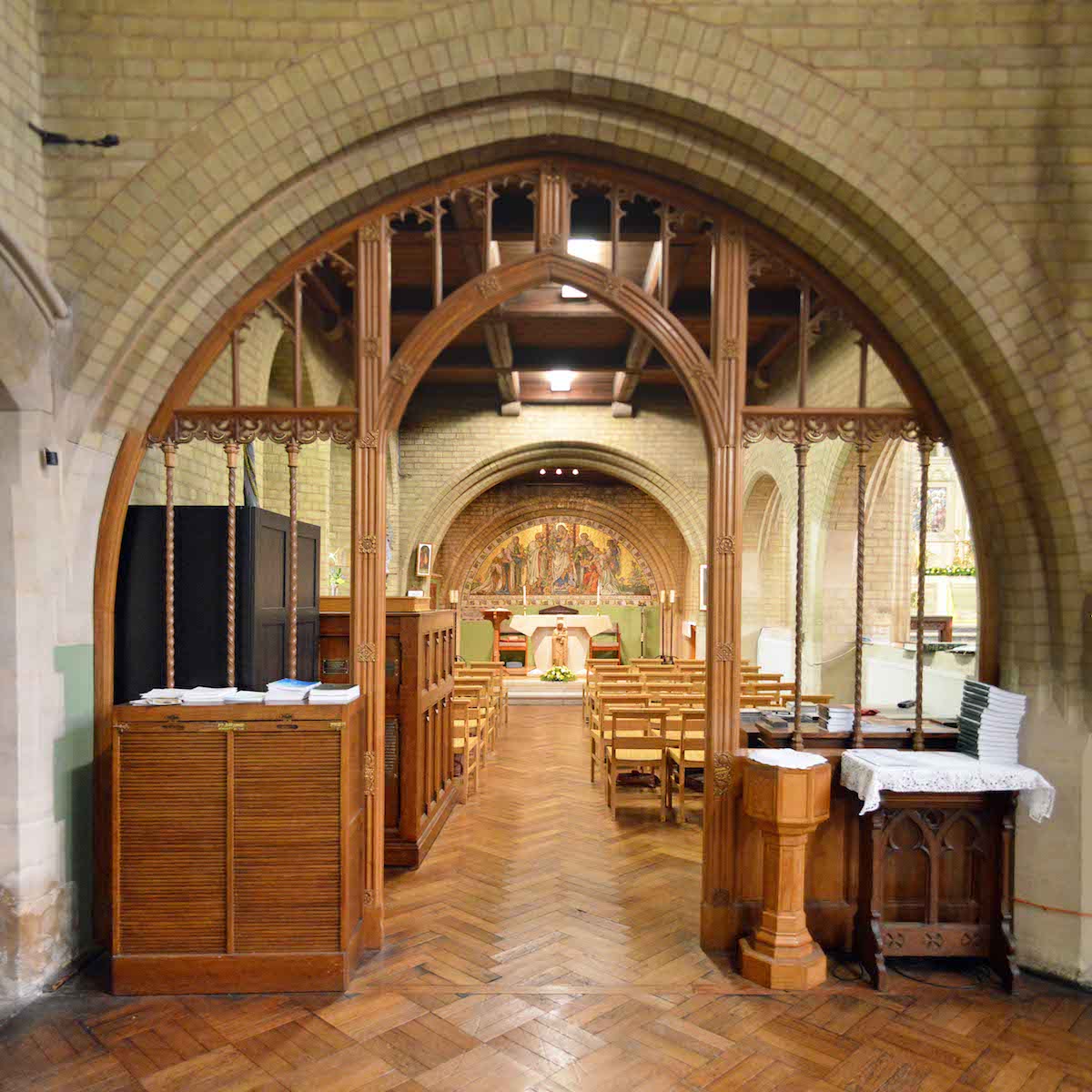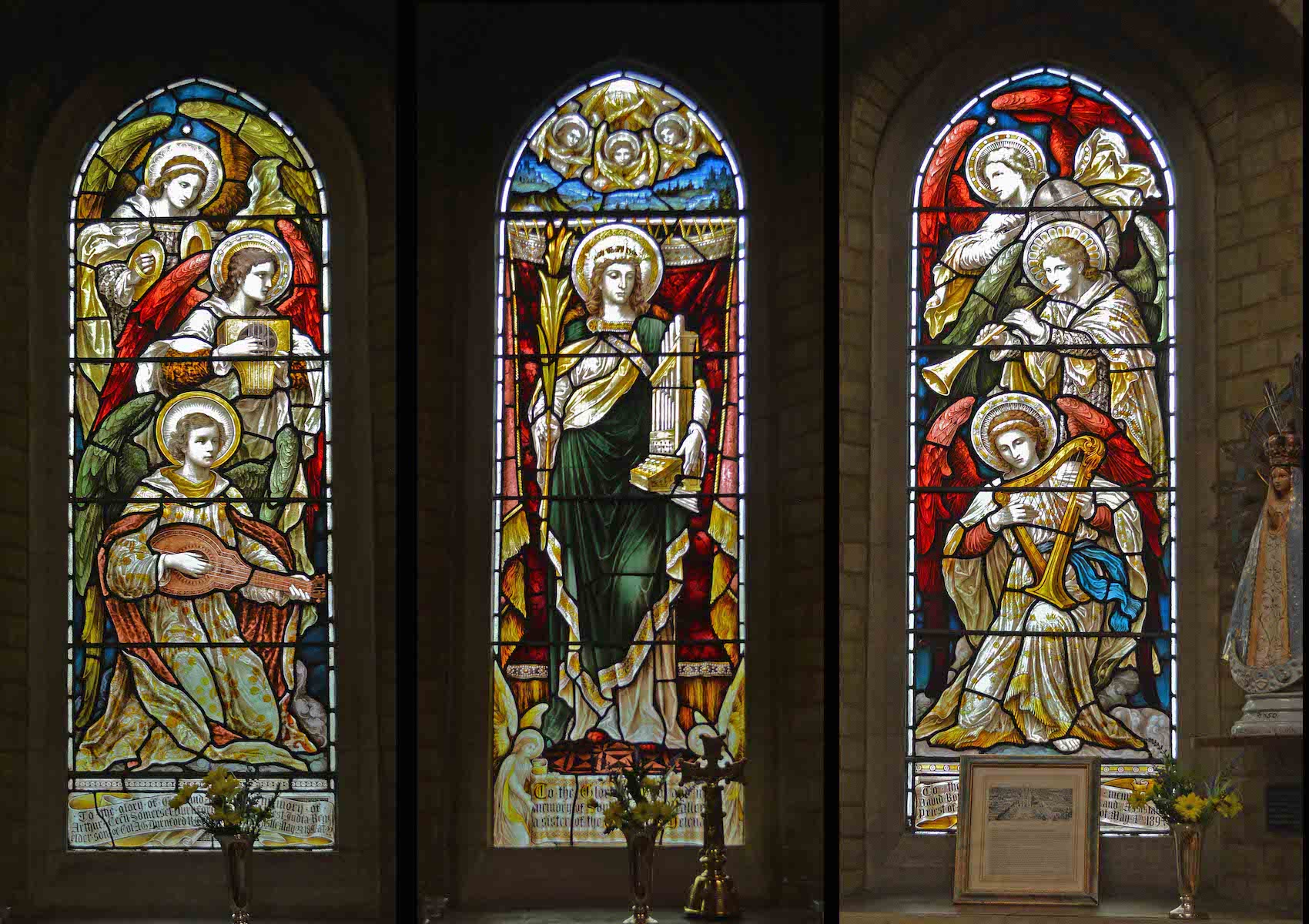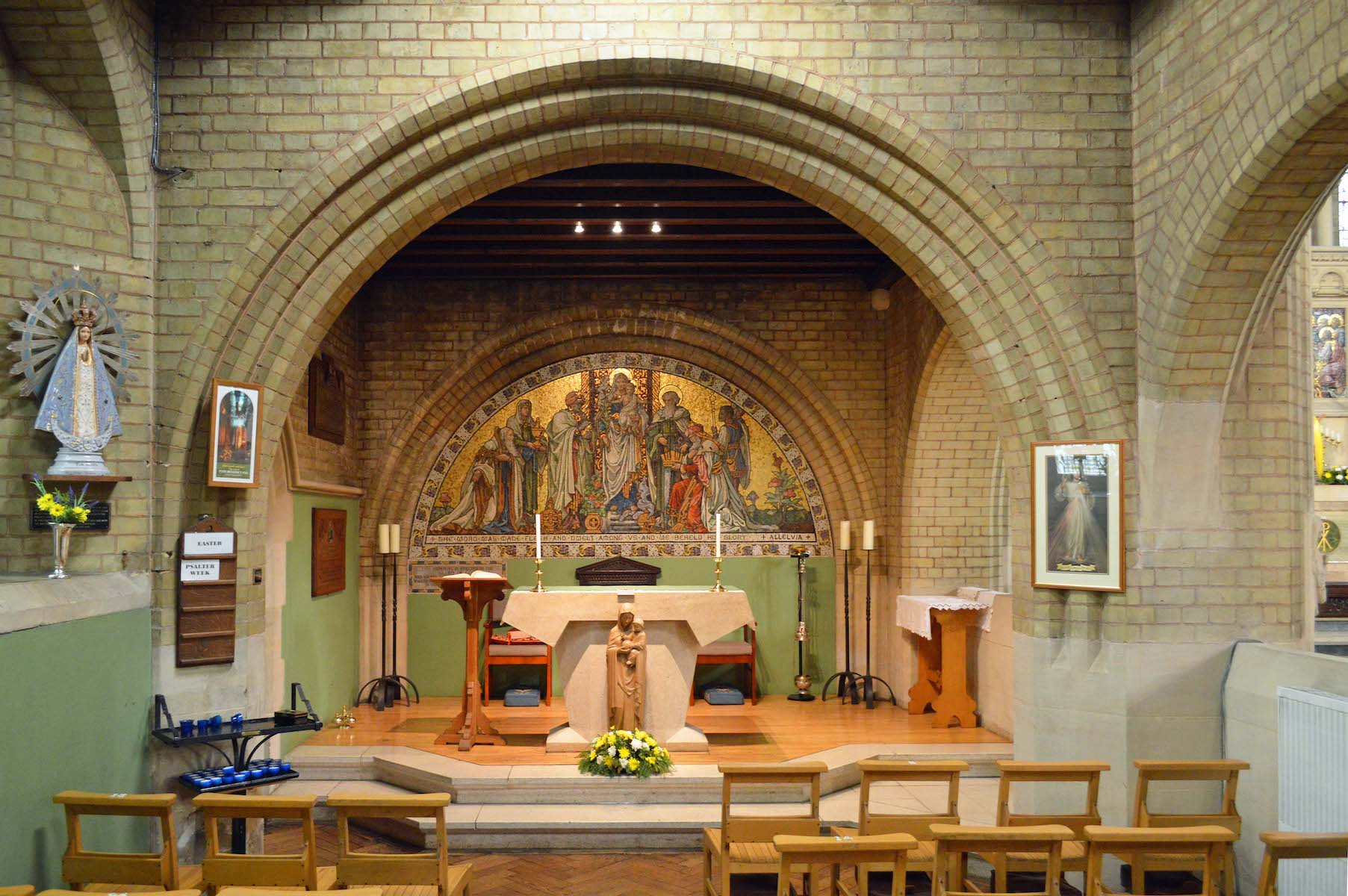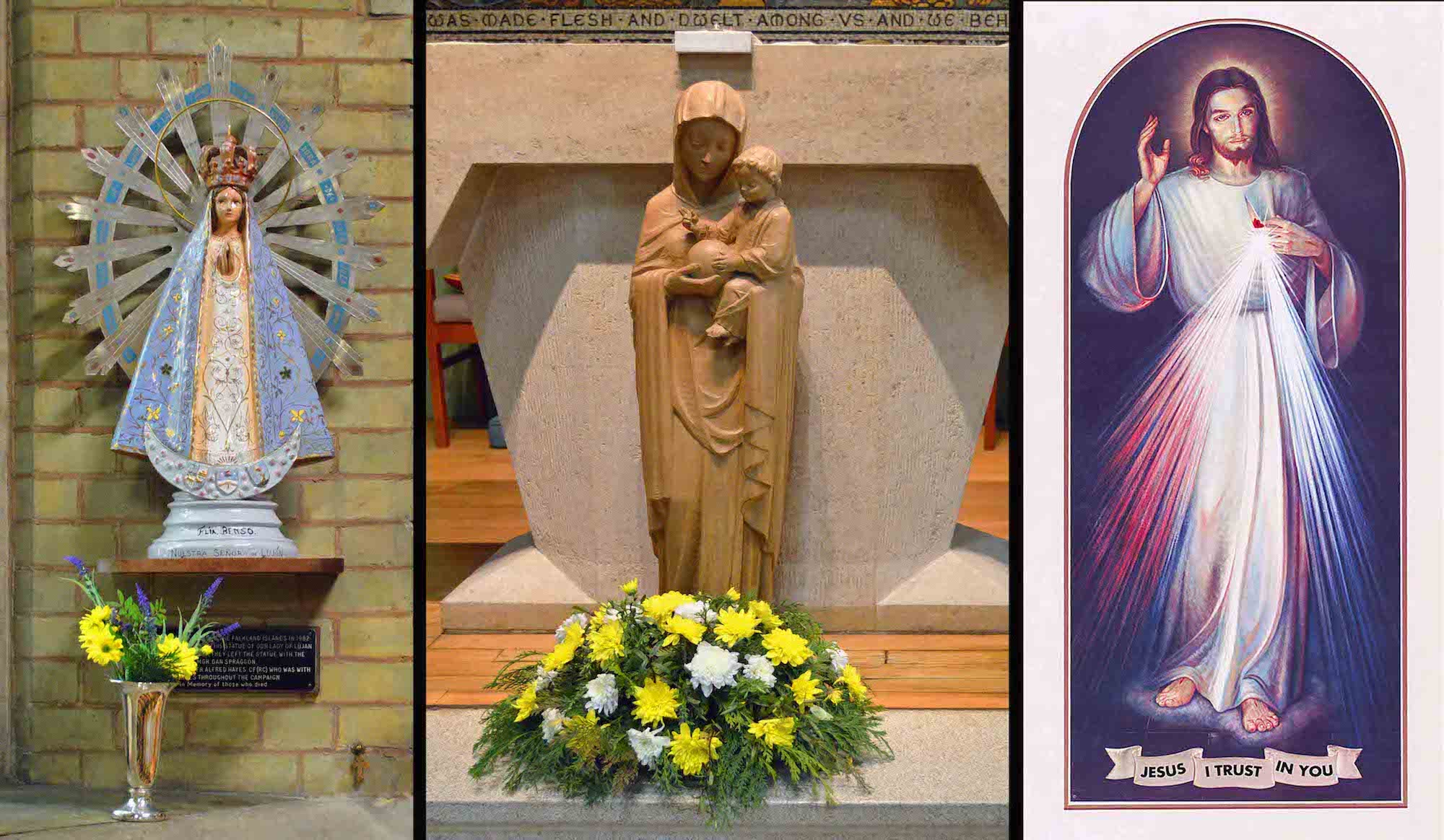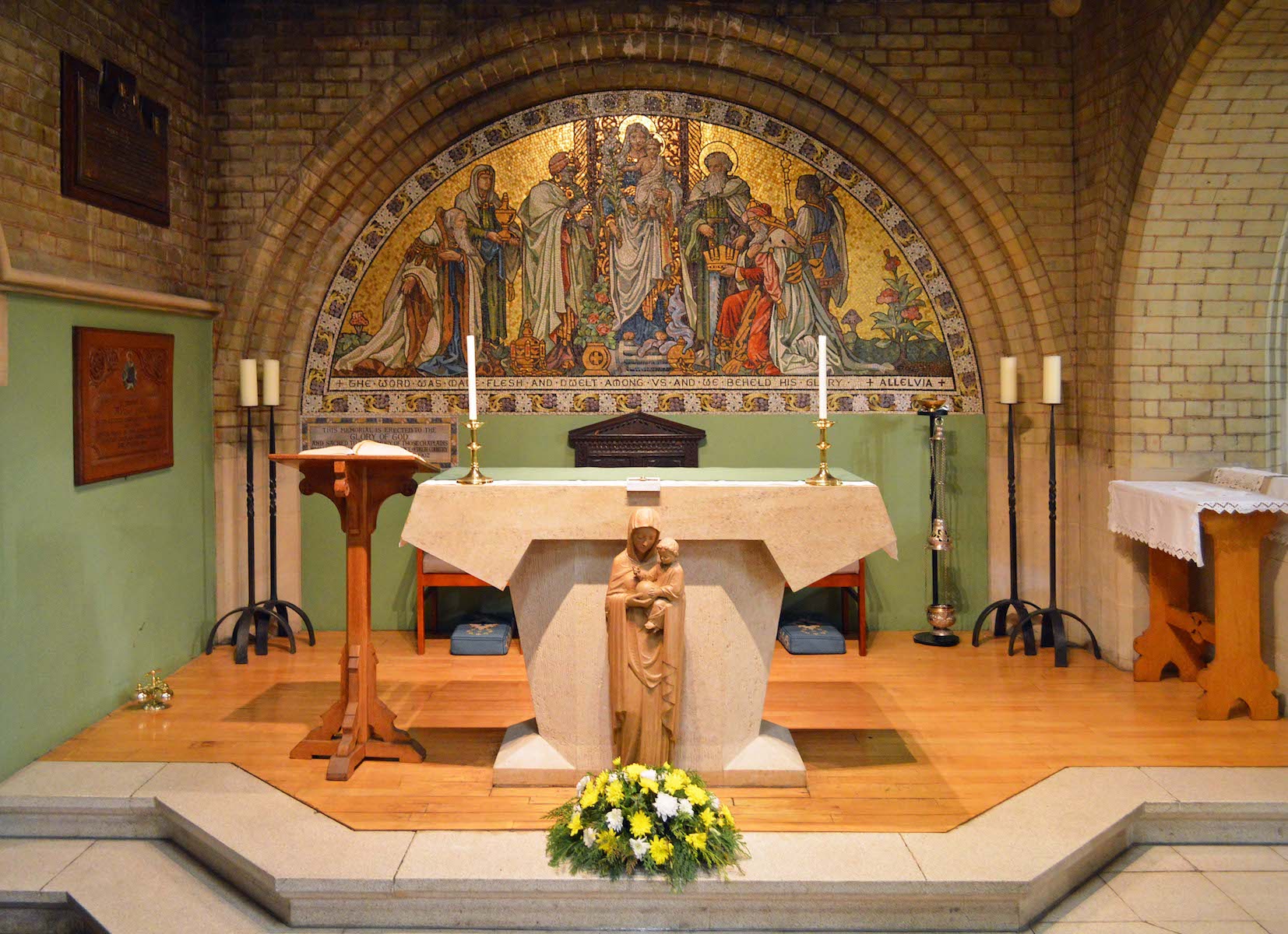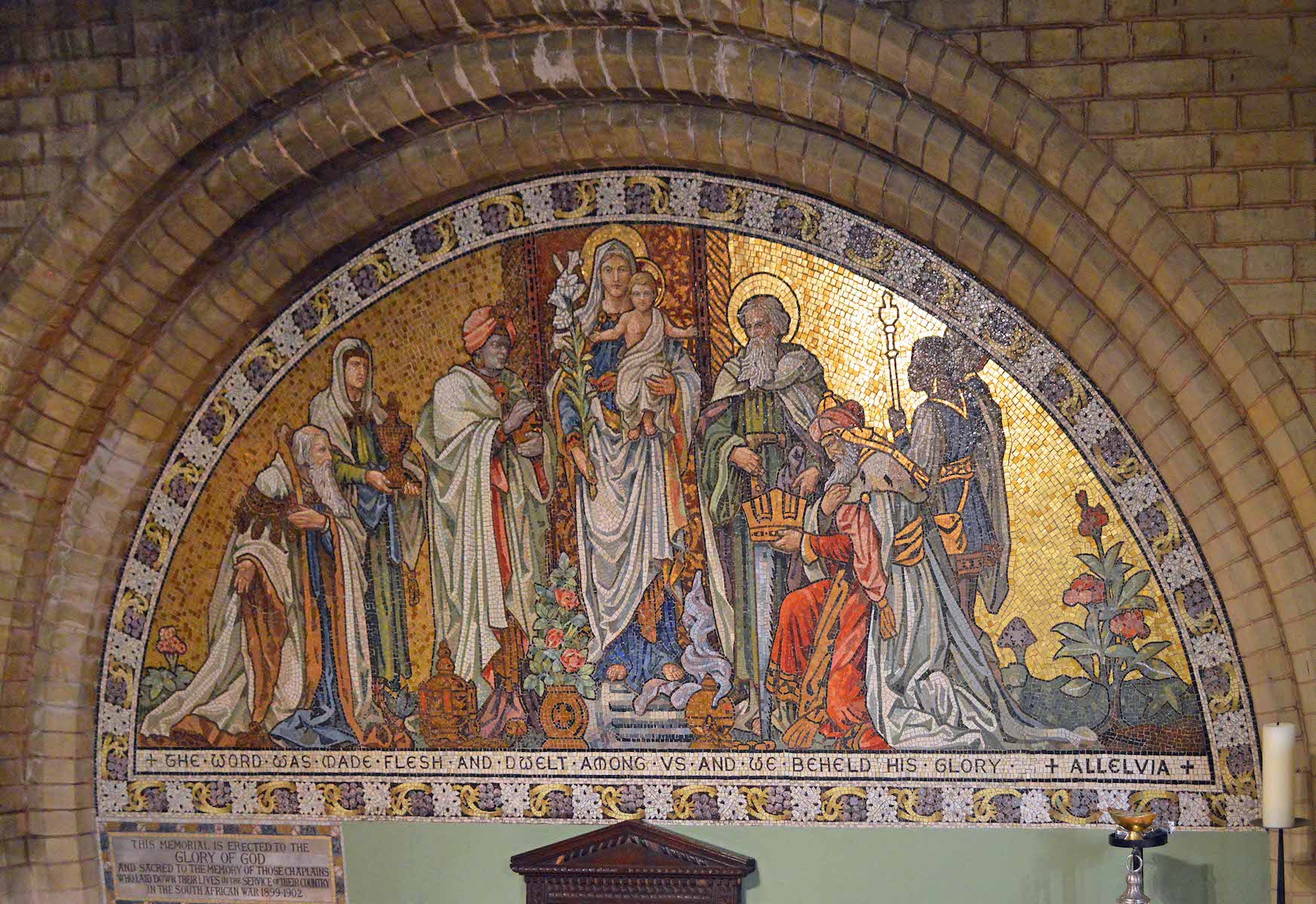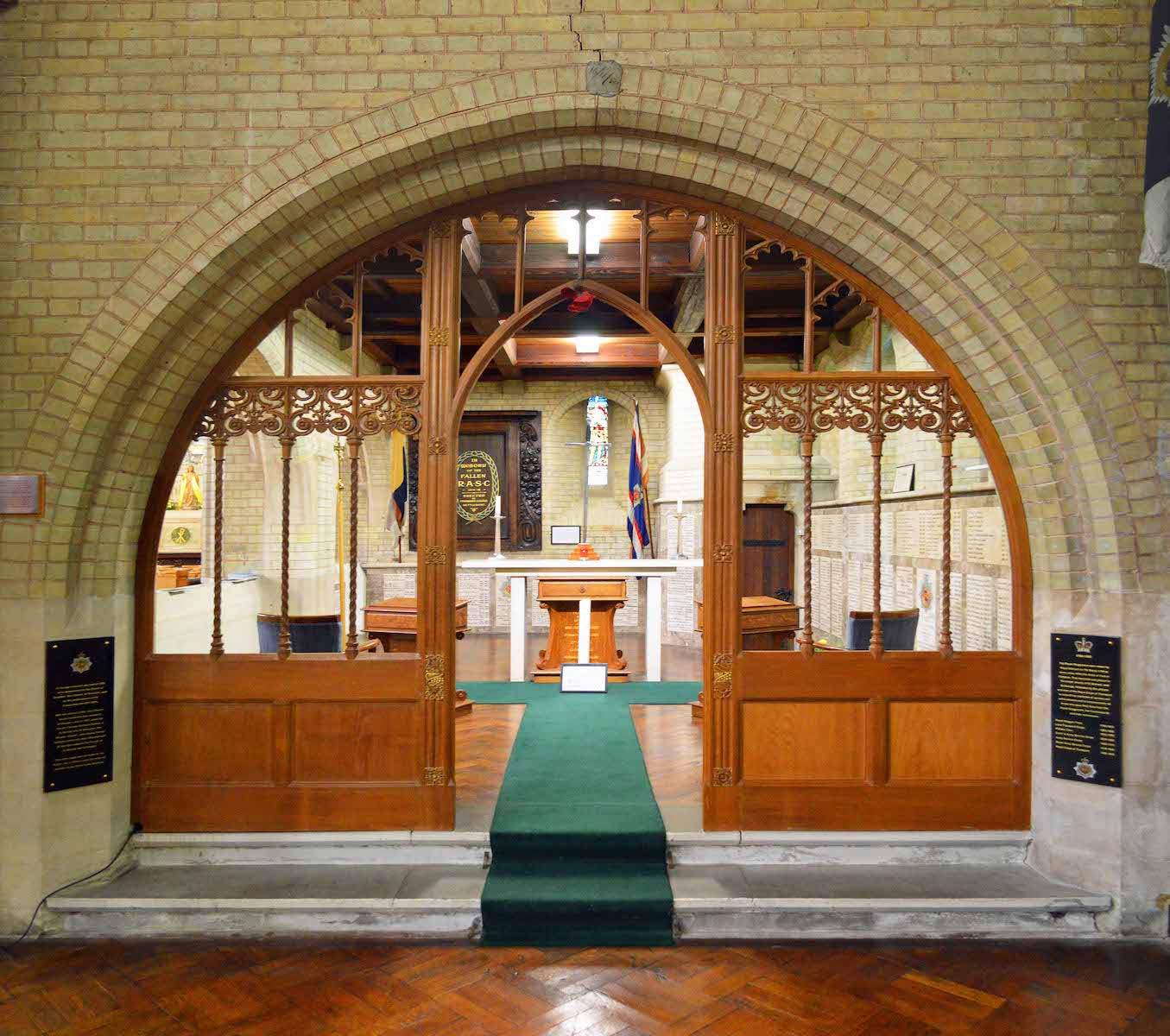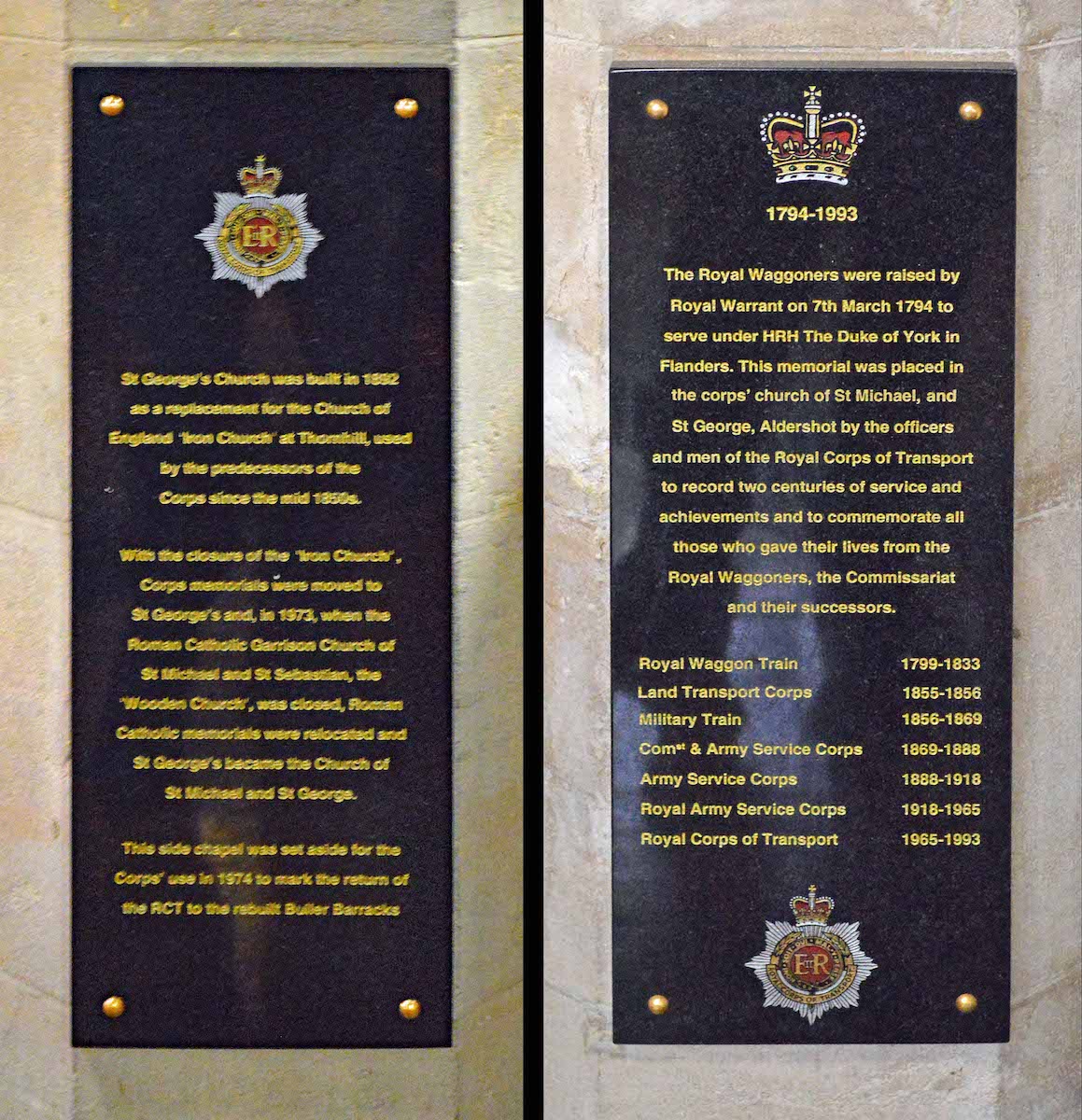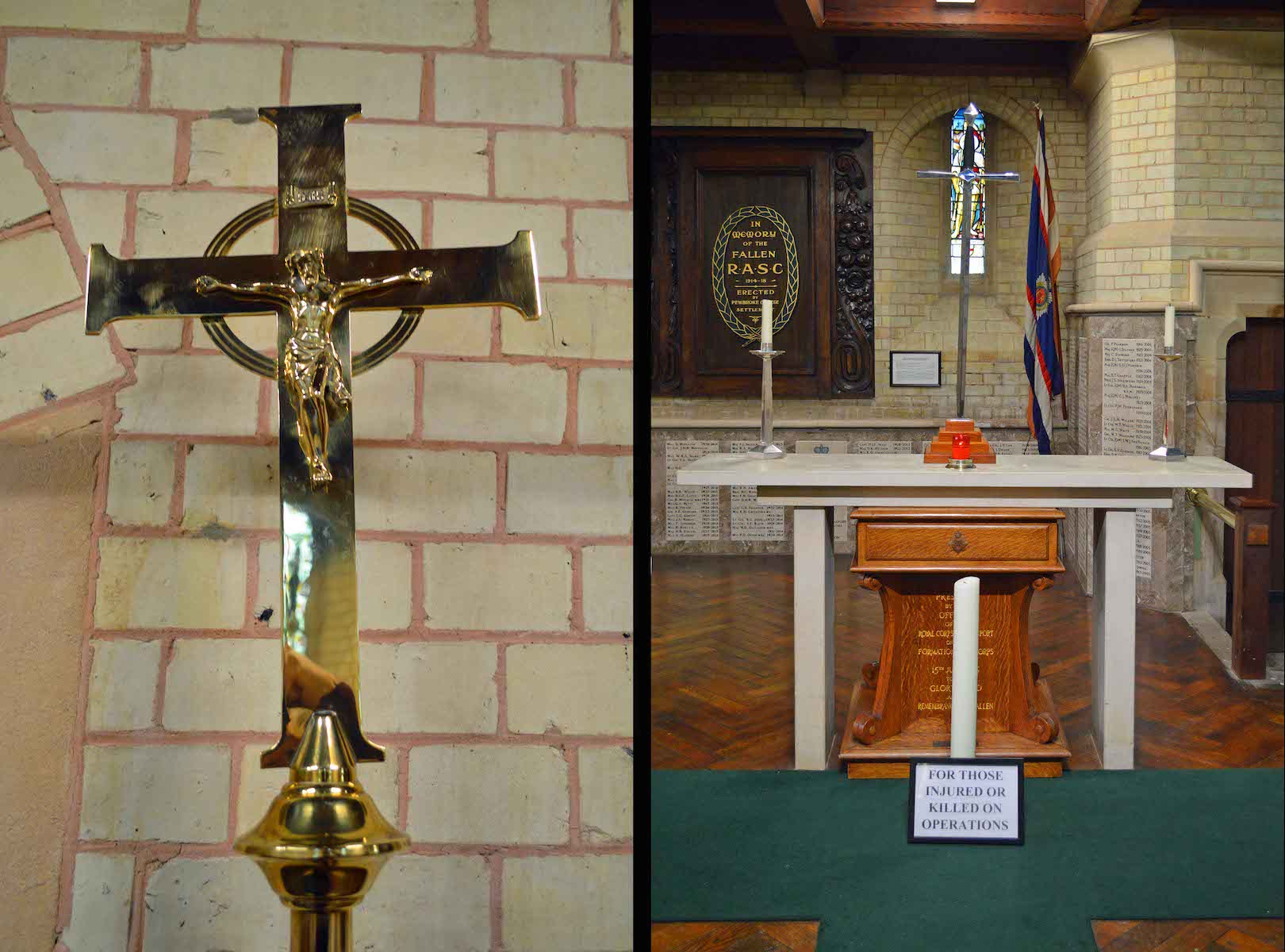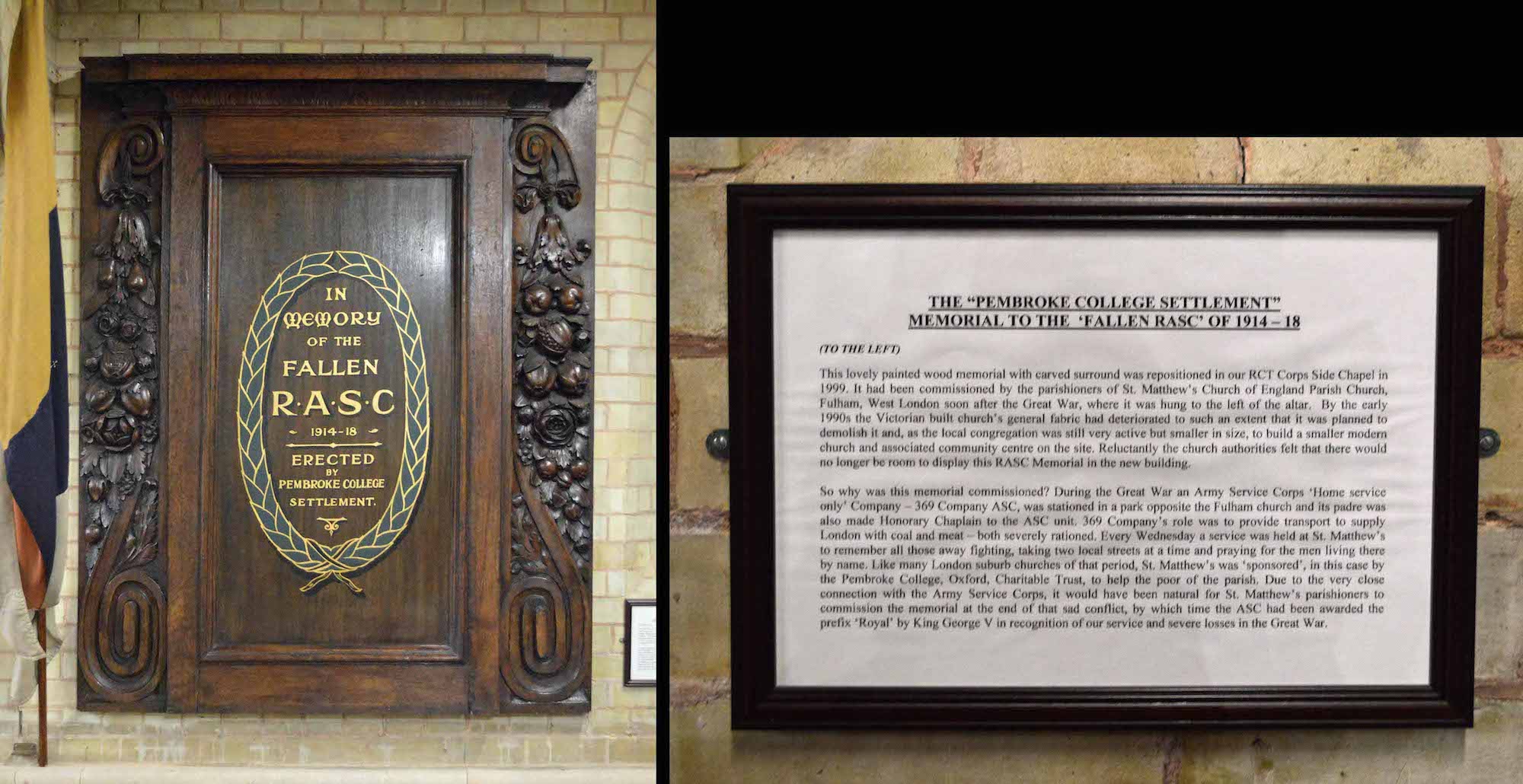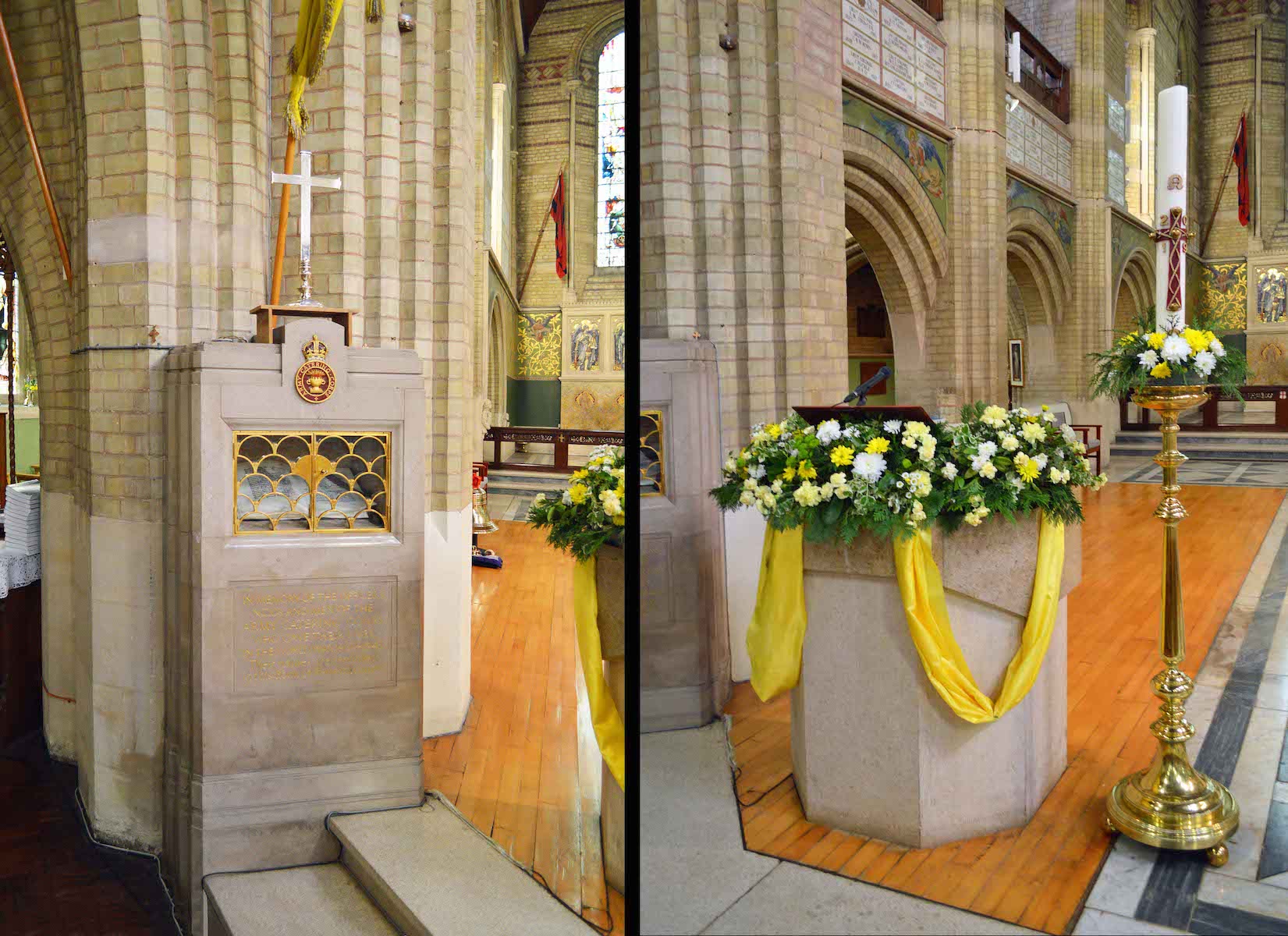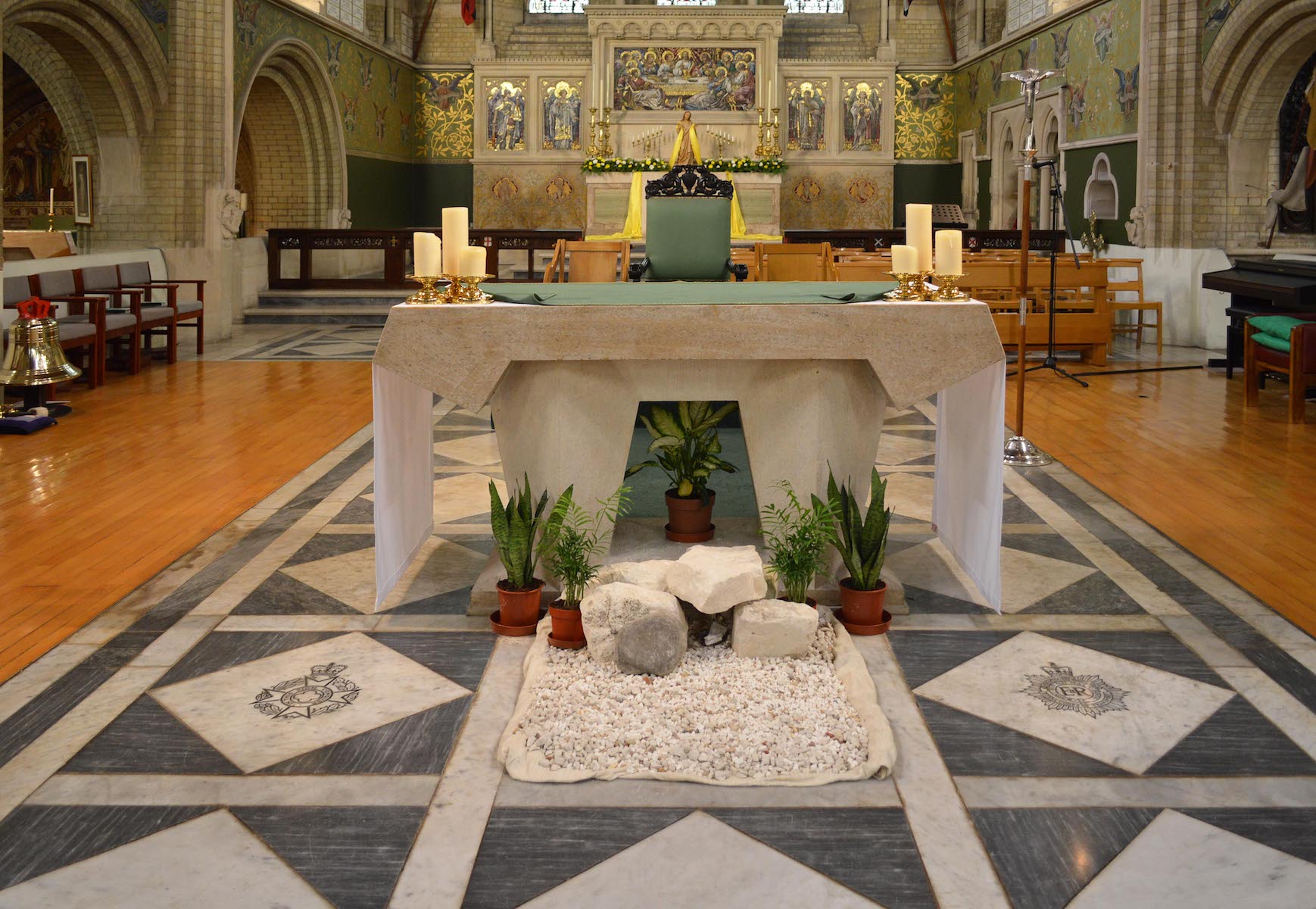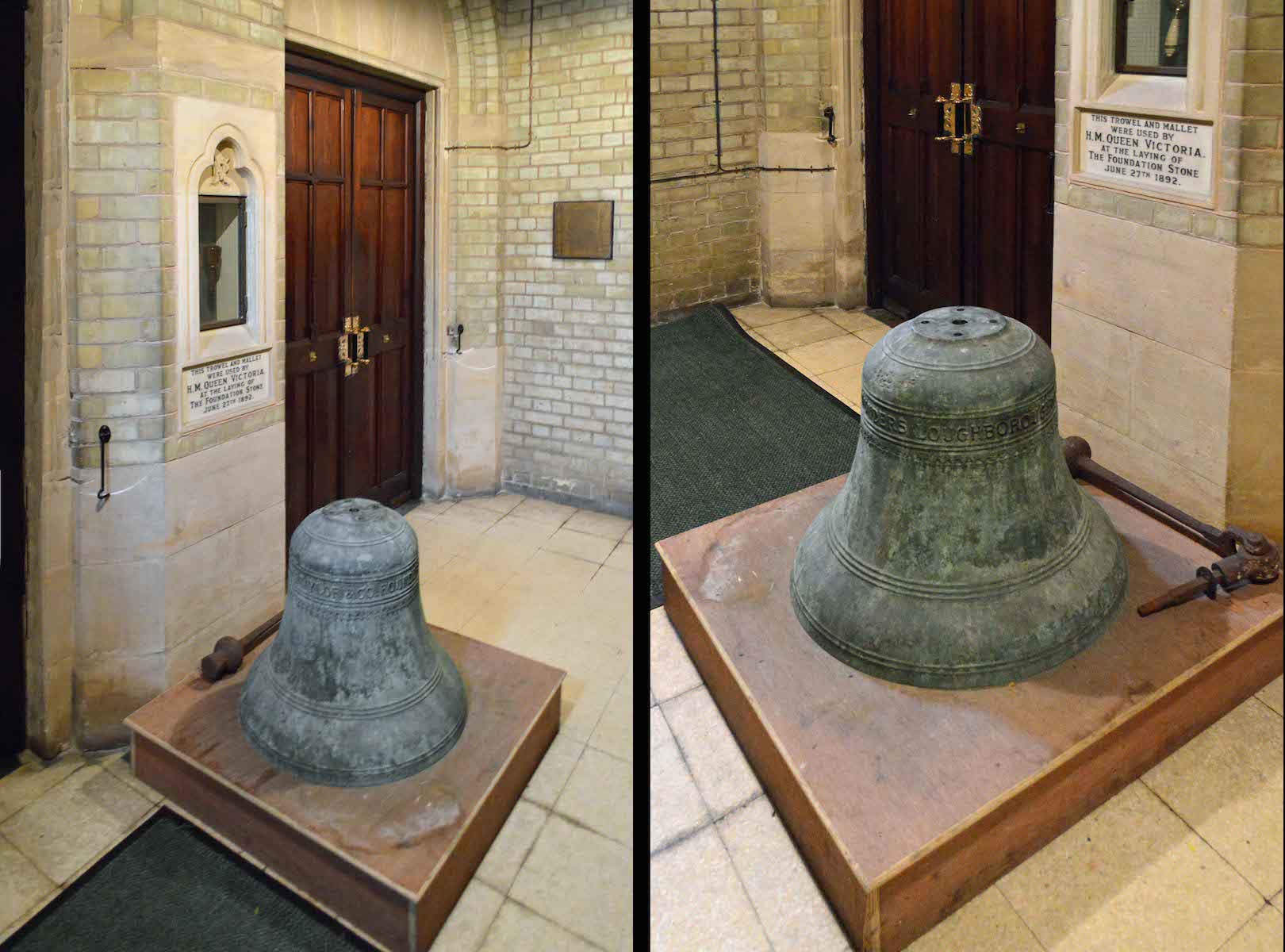
We now leave the nave and investigate the Northeast porch, which gives an entry into the Cathedral. Here there is a large bell made by Taylor's Bell Foundry of Loughborough, which is the world's largest working bell foundry. Presumably the bell once hung in the tower. INDEX
42. NORTHEAST ENTRY: TROWEL AND CROSS
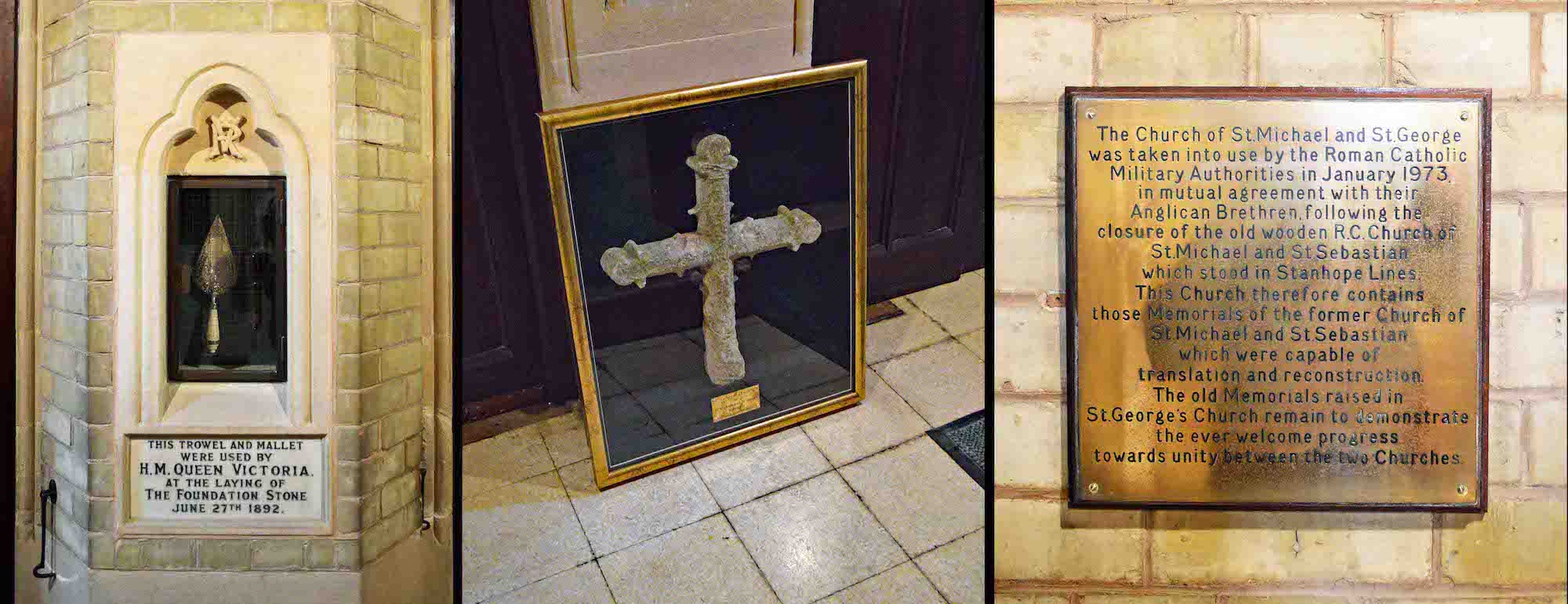
On the wall is the trowel and mallet used by Queen Victoria in laying the foundation stone, June 27, 1892. There is also a framed and rather worn cross. When the Cathedral roof was replaced in 2107, it was discovered that the cross on the roof was cracked and water damaged. A replica cross was therefore commissioned and carved by stonemason Darren Hill. The brass plate gives a brief account of the recent history of the Cathedral.
43. CHANCEL AND SANCTUARY
We now stand at the front of the nave. We shall return to this spot, but for now we observe that there is a chapel on either side of the chancel / sanctuary. To the right is the Chapel of the Blessed Sacrament, and to the left is the Lady Chapel. We investigate this first.
45. LADY CHAPEL WINDOWS
The Lady Chapel has three beautiful windows on the side wall. All very musical with St Cecelia at centre and accompanying angels.
46. LADY CHAPEL
The Lady Chapel has a smart altar with an intricate mosaic behind. In the foreground is a Madonna and Child before the altar, an unusual sculpture of Mary to the left, and a print of ‘Divine Mercy’ to the right.
47. LADY CHAPEL DETAILS
The statue at left is Our Lady of Luján – a celebrated 16th-century icon of the Virgin Mary. The original image, also known as the Virgin of Luján, is on display in the Basilica of Luján in Argentina. At centre is a very attractive wooden carved statue of the Madonna and Child. At right is a print of the well-known image ‘Divine Mercy’ – a depiction of Jesus based on the devotion initiated by Saint Faustina Kowalska.
48. LADY CHAPEL ALTAR
The stylish stone altar bears two candle-sticks.
49. LADY CHAPEL MOSAIC
The Lady Chapel has a particularly fine mosaic dedicated to the Army Chaplains who lost their lives in the Boer War of 1899–1902. The mosaic shows Mary with the baby Jesus being visited by the shepherds and the Wise Men. Along the base is the text: + The Word became flesh and dwelt among us and we beheld his glory. Alleluia. +
51. CHAPEL ENTRY PLAQUES
The panel at right tells how the present Royal Corps of Transport evolved from the Royal Waggoners. The panel at left gives a brief history of the Cathedral, and tells how this chapel was set aside in 1974 for the use of the Royal Corps of Transport when they moved to the Buller Barracks at Aldershot.
52. RASC CHAPEL CROSS AND ALTAR
The chapel has a simple altar into which is built an ‘eternal flame’, to remember ’those killed or injured in operations’. The ceremonial cross behind looks very much like a sword. And to the left is a gold Crucifix with the figure of Christ surrounded by a Celtic circle.
53. RASC CHAPEL MEMORIAL
Behind the altar is a special memorial known as the ‘Pembroke College Settlement’ Memorial. It remembers the Fallen RASC of 1914-1918. The accompanying notice tells why the Memorial was commissioned.
54. CHAPEL WALL PLAQUES
Three walls of the RASC Chapel are lined with memorial lists. The pictured lists are those lining the North and East walls of the chapel. Each line contains the rank, name and dates of a member of the Royal Corps of Transport who died. We notice that the death dates are mostly in the 2000s.
55. CHAPEL SOUTH WALL
Further lists can be seen on the South wall of the chapel. The death dates here are all later than 1980.
56. CHANCEL AND SANCTUARY
Leaving the Chapel of the Blessed Sacrament, we finally turn to the chancel and sanctuary. Above us is an unusual Rood figure of Christ. To the left stands a monument with the ambo in front. At centre is the nave altar. To the right is a lectern, chair and banner. And further right is another baptismal font with a cabinet containing the three Holy Oils.
57. ROOD CROSS
In 2015 a sanctuary crucifix made from the parts of 23 aircraft dated from the 1930s to the present was blessed and dedicated in the Cathedral. Constructed by Yorkshire-based blacksmith Chris Raw, the crucifix was described as ‘a fitting and deeply significant link to those of us who serve in the Royal Air Force and our colleagues who went before us especially those who lost their lives in the service of their country.’
58. MEMORIAL AND PULPIT
In the memorial, an open Book of Remembrance is visible behind the grill. The emblem at top is for The Army Catering Corps. In front of this memorial is the Cathedral pulpit – beautifully decorated.
59. NAVE ALTAR
The nave altar is similar in design to the altar in the Lady Chapel. In the 1960s, Vatican II decreed that a nave altar be used in churches, rather than the traditional high altar. This means that the priest administering the Eucharist faces the congregation and is close to them. Many churches, including this Cathedral, have retained the high altar for special occasions.
60. EMBLEMS, ROCK GARDEN
In front of the altar is this rock garden: a reminder of the Easter story in which Christ rose from the dead and escaped his rock tomb. There is an emblem in the floor on either side. At left is the emblem of the Royal Army Chaplains. The text reads ‘In this sign conquer’. First used by the Emperor Constantine, this became the motto of the Chaplains. At right is the emblem of the Royal Corps of Transport.


